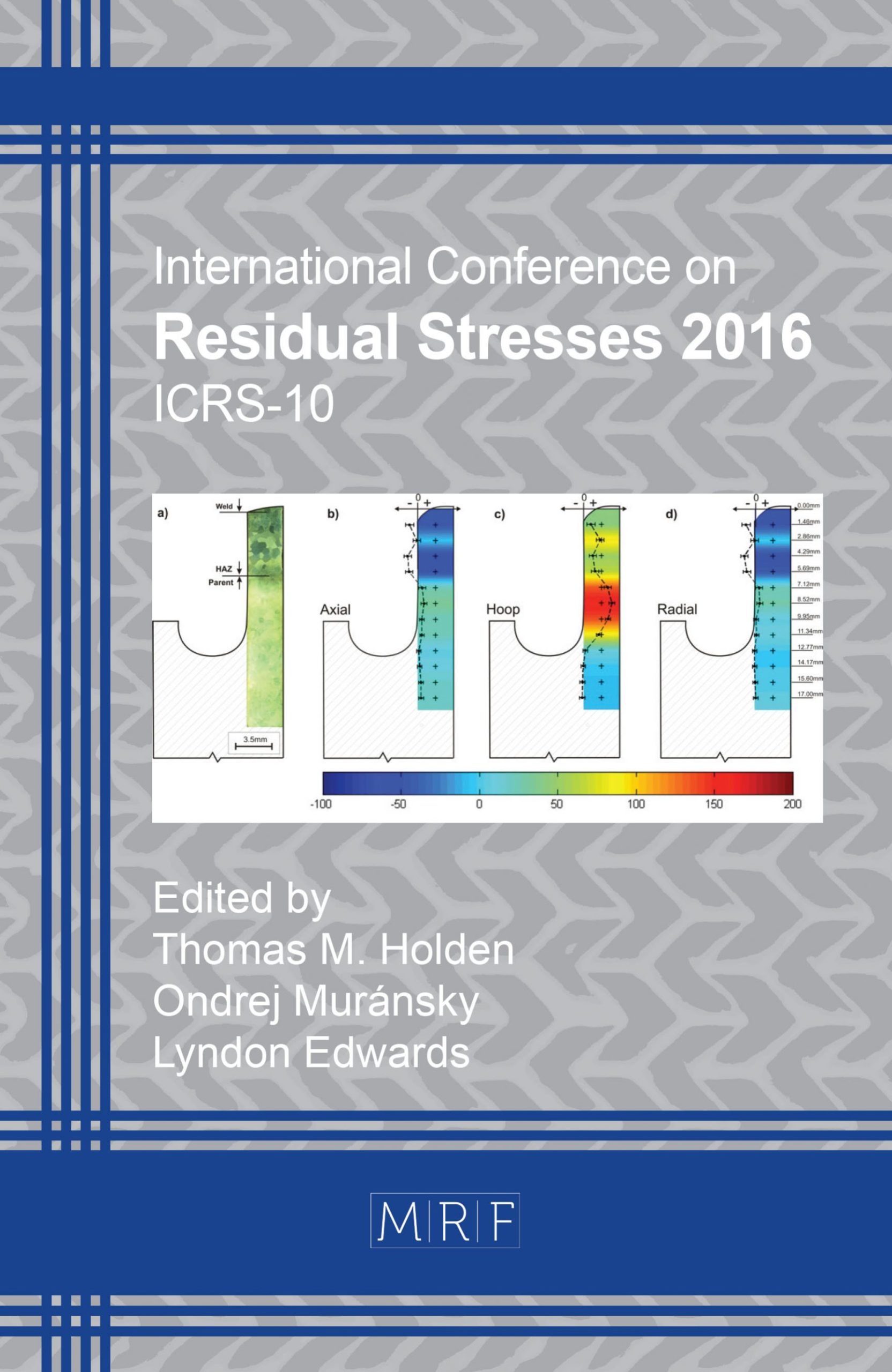Contour, iDHD, and ICHD Residual Stress Measurements on a T-Section Plate
X. Ficquet, D. Douglas, K. Serasli, F. Bridier
download PDFAbstract. This paper presents a review of work carried out to ascertain the residual stresses present within a T- plate section. The contour method, the incremental deep hole drilling (iDHD) and the incremental centre hole drilling (ICHD) are coupled to determined longitudinal and transverse components of residual stress in the weld tope of the fillet weld in the as-welded condition. This paper presents first the measurement using the iDHD method and the measurement obtained using the contour method is then presented. The accuracy and resolution of the contour method results are directly linked to the quality of the electro- discharge machining (EDM) cut made. The challenges incurs by cutting complex geometry like this T- plate section are identified and their influence on residual stresses calculated by the contour method is quantified.
Keywords
Residual Stress, Contour, iDHD, T-Section, Fillet Weld
Published online 12/22/2016, 6 pages
Copyright © 2016 by the author(s)
Published under license by Materials Research Forum LLC., Millersville PA, USA
Citation: X. Ficquet, D. Douglas, K. Serasli, F. Bridier, ‘Contour, iDHD, and ICHD Residual Stress Measurements on a T-Section Plate’, Materials Research Proceedings, Vol. 2, pp 341-346, 2017
DOI: http://dx.doi.org/10.21741/9781945291173-58
The article was published as article 58 of the book Residual Stresses 2016
![]() Content from this work may be used under the terms of the Creative Commons Attribution 3.0 licence. Any further distribution of this work must maintain attribution to the author(s) and the title of the work, journal citation and DOI.
Content from this work may be used under the terms of the Creative Commons Attribution 3.0 licence. Any further distribution of this work must maintain attribution to the author(s) and the title of the work, journal citation and DOI.
References
[1] R. H. Leggatt, D. J. Smith, S. Smith, and F. Faure, “Development and experimental validation of the deep hole method for residual stress measurement”, Journal of Strain Analysis for Engineering Design, Vol 31, No 3, pp 177-186, (1996). https://doi.org/10.1243/03093247V313177
[2] Kingston, E. K., et al., “Novel applications of the deep-hole drilling technique for measuring through- thickness residual stress distributions”, Journal of ASTM International, Vol 3, No 4, (2006). https://doi.org/10.1520/JAI12568
[3] Hosseinzadeh, F. et al. “Towards good practice guidelines for the contour method of residual stress measurement”, Journal of Engineering (2014).
[4] Traore, Y. et al. “Measurement of the Residual Stress Tensor in a Compact Tension Weld Specimen”, Experimental Mechanics, 53(4):605-618. https://doi.org/10.1007/s11340-012-9672-7































